Best gaming SSD 2022: get into the game quicker than ever before
Get your games going faster with the best gaming SSDs for every budget and setup
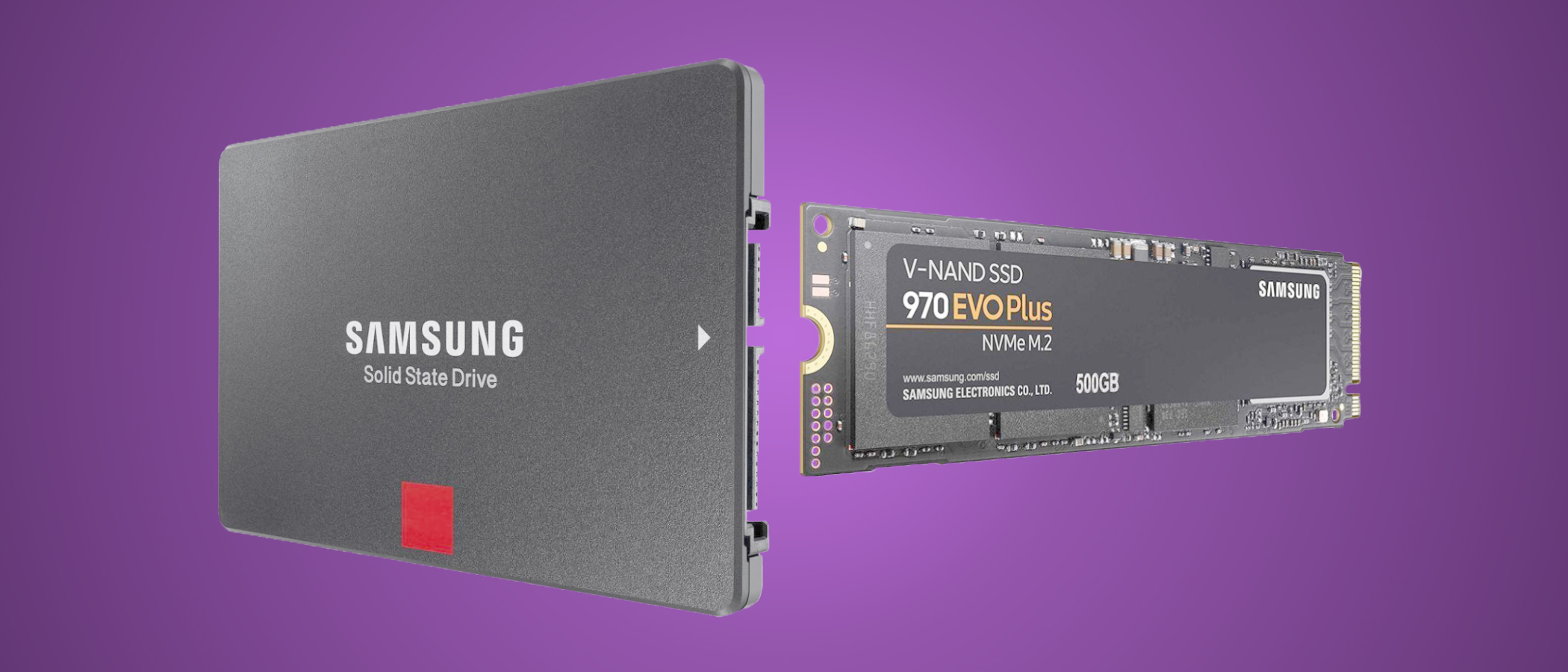
Don’t forget to invest in the best gaming SSD available when putting together your gaming rig. You may have spent a lot of time and money researching the various GPUs, CPUs, RAM, and RGB-enabled cooling fans so don’t skimp when it comes to your storage and potentially create a bottleneck in your system every time it tries to read or write to your drive.
Having the best SSD for gaming will affect your experience as much as the best graphics card since it’s responsible for loading and unloading your data, and could mean the difference between waiting a few seconds or waiting a few minutes to load your data. Fortunately, investing in a great storage drive is not going to break the bank. You’ll be able to find plenty with a decent amount of storage space for a reasonable price. In short, it’s an easy, inexpensive upgrade so you should get the best one you can get your hands on.
One drawback though – you’re limited by what your motherboard is compatible with. M.2 SSDs would be the immediate recommendation, particularly for data access-intensive tasks like video editing, since they can plug right into the motherboard.
With that said, though SATA SSDs are a bit outmoded in this day and age, plenty of users just don’t have newer M.2 compatible motherboards. Considering how long SATA SSDs have been around, with the best hard drives being around even longer, even the least expensive ones have pushed their data transfer capacity as far as they can go. That means that even if you have to go with a SATA option instead of a M.2 SSD, the best gaming SSDs are going to give great performance for the price.
Regardless of whether you’re rocking one of the best motherboards around with loads of M.2 connections or are using a SATA connection, do yourself and that best gaming PC you’ve invested so much in and buy the best gaming SSD that you can for your budget and configuration.
- Check out the best portable SSDs available right now
- Save some money on storage with this month's best cheap SSD deals
- SSD vs. HDD: which is best for your needs?
Best gaming SSD at a glance
Why you can trust TechRadar
- Adata XPG SX8200 Pro (M.2)
- WD Black SN750 (M.2)
- Samsung 970 EVO Plus (M.2)
- Corsair Force MP600 (M.2)
- Samsung 860 Pro (SATA III)
- WD Blue 3D NAND (SATA III)

Specifications
Reasons to buy
Reasons to avoid
If you're looking for great value when building a new gaming rig, then the Adata XPG SX8200 Pro SSD is one of the best gaming SSDs you're going to find.
It has respectably-high sequential read and write speeds that hold their own against the WD Black SN750 and Samsung 970 EVO Plus. It also has outstanding durability, with an MTBF rating of 2,000,000 hours and a TBW score of up to 1280 at 2TB - the highest of the PCIe 3.0 M.2s on the list - and 160 at 256GB. It also has a 5-year warranty, so no matter the capacity you buy, it will keep hustling along, even if it's a tad bit slower than the rest.
Where it does fall short compared to the SN750 and the 970 EVO Plus - by a good bit, in fact - is its random access speeds, which are a little under half as fast, though the XPG SX8200 Pro is still more than fast enough for all but the most meticulous, BIS builders out there.
It's also crazy affordable as you move up to larger capacities, beating out the SN750 by about $100/£80/AU$140 and the 970 EVO Plus by about $160/£130/AU$240 at the 2TB capacity - great if you have a large game library and you want to move everything over to an NVMe SSD.
- Read the full XPG SX8200 M.2 SSD review here
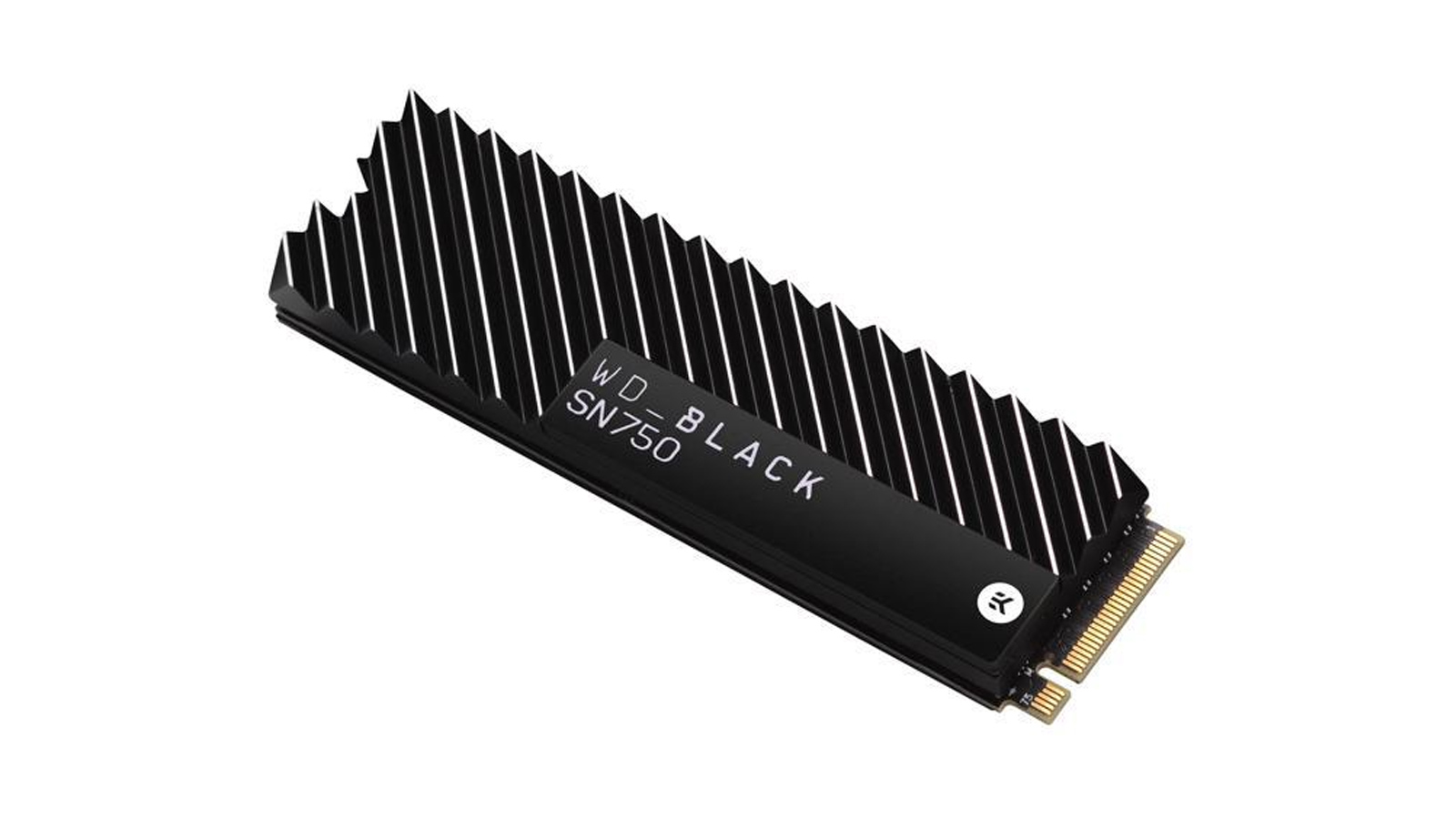
Specifications
Reasons to buy
Reasons to avoid
If you're looking for the best gaming SSD for your set up, you're going to want to take a look at the WD Black SN750 NVMe SSD. It has excellent performance overall, with fast sequential read and write speeds, though not the fastest, and it has significantly higher random access speeds than the XPG SX 8200. It falls short of the 970 EVO Plus's random access speeds, but not by much.
As for durability, it has an MTBF of 1,750,000 hours, a TBW of 1200 at 2TB, and a 5-year warranty, so you can expect to get a lot of useful life out of this SSD. If you can spend a little more money, you can get a model with a built-in heatsink for some extra heat management that should help extend that useful life even more. Unfortunately, if you want one with a heatsink, that option is only available on models with a capacity of 500GB and over.
The WD Black SN750 NVMe SSD also has a great capacity-to-price ratio, lagging behind only the XPG at higher capacities, and matching its price at 1TB if you don't go with the heatsink option. It comes in a little bit less than the Samsung 970 EVO Plus at every capacity, with or without, the heatsink, so the WD Black SN750 is a perfect compromise between the speed of the 970 EVO Plus and the durability of the XPG SX8200.
- Read the full WB Black SN750 NVMe SSD review here

Specifications
Reasons to buy
Reasons to avoid
The Samsung 970 EVO Plus has some of the fastest sequential read and write speeds of any PCIe 3.0 M.2 SSD out there, making it an obvious contender for the best gaming SDD among the M.2s. Its random access speeds are also the fastest of the PCIe 3.0s on the list, making it easily the winner of the PCIe 3.0 bracket in terms of raw power.
The downside is its durability. While not made of glass by any means, the 970 EVO Plus has the lowest durability as measured by MTBF, rating only 1,500,000 hours, which puts it behind both the XPG SX8200 and the WD Black SN750 by 25% and 12.5%, respectively. Its TBW rating at 2TB is 1200, matching the SN750, but at 256GB, it scores a rather low 150, the lowest of the three PCIe 3.0 M.2s on the list. It does come with a 5-year warranty though, so it's on par with its competition as far as that goes.
It doesn't come with an option for a built-in heat sink, so any heat it generates will have to be bled off using your case's fans or other cooling solutions. It does have something called Dynamic Thermal Guard technology to help regulate the SSD's core temperature, though, as well as a hardware heat spreader and a nickel-coated controller to mitigate heat build-up. While not quite a heatsink, it's not nothing.
Of all the M.2 SSD's on this list, the Samsung EVO Plus is the most expensive, in some cases (like the XPG SX8200) by a good margin. If you have the money to spend, you want the fastest SSD your money can buy, and you don't have a PCIe 4.0-compatible motherboard, then the Samsung EVO Plus is very likely the SSD for you.
- Read the full Samsung 970 EVO Plus review here
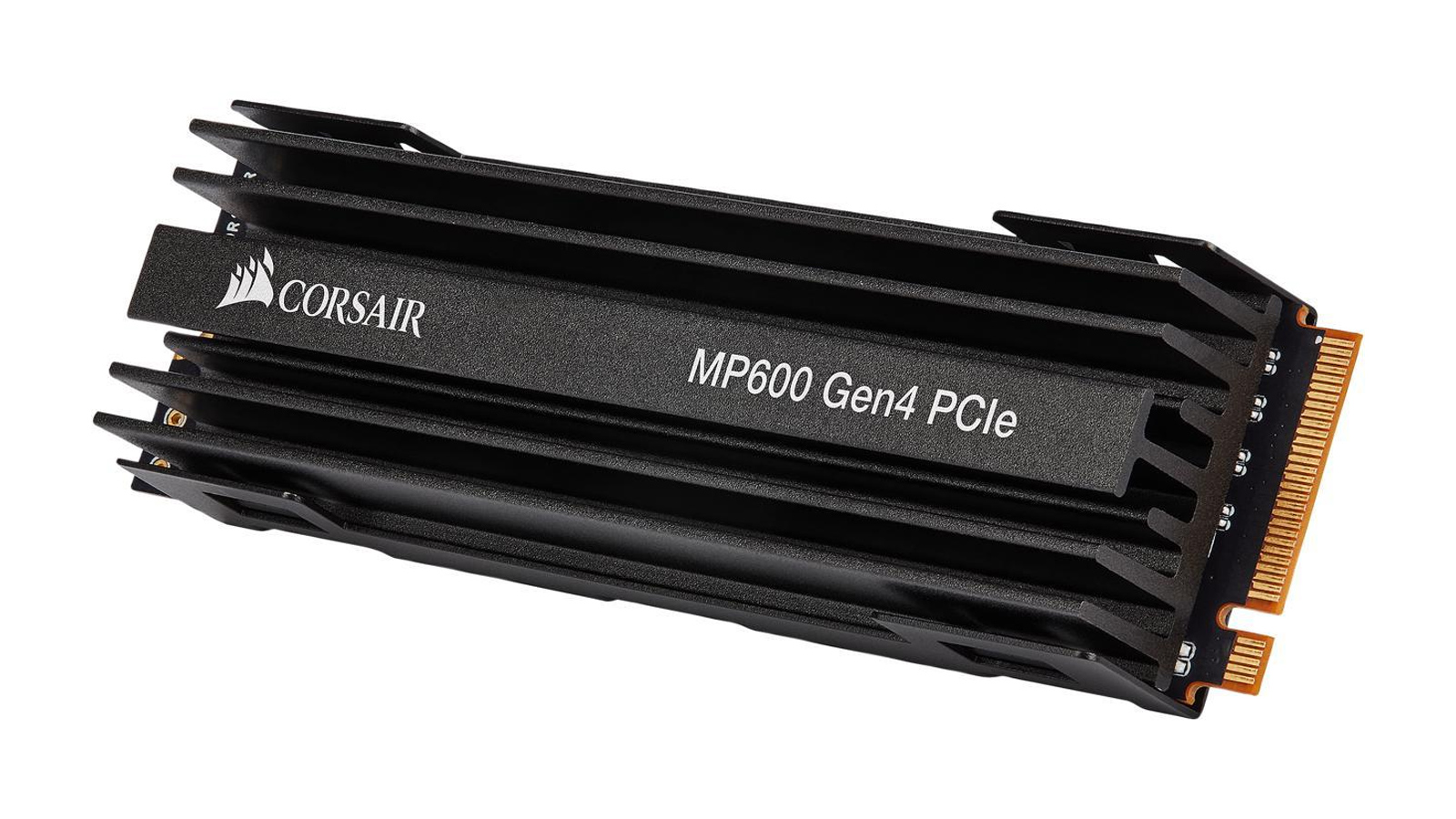
4. Corsair Force MP600
Specifications
Reasons to buy
Reasons to avoid
The Corsair Force MP600 is far and away the fastest gaming SSD on this list. Add to that its durability lapping the other M.2 SSDs listed above several times over and an aluminum heatsink as a standard feature, all things being equal, there shouldn't be a contest as to which was the best gaming SSD on this list. But there's a mighty big caveat to the Corsair Force MP600's dominance.
When some consumers don't even have an M.2 slot on their motherboard, even fewer have PCIe 4.0-capable motherboard at the moment, so the number of people who can actually use this SSD is still rather smaller.
The SSD's performance is also due entirely to its PCIe 4.0 interface (which has roughly double the data bandwidth of the PCIe 3.0) and the Corsair Force MP600 doesn't actually come close to utilizing the full potential of the PCIe 4.0 standard. Manufacturers are starting to roll out their new PCIe 4.0 M.2 SSDs soon enough and many of the big names like Samsung and Western Digital are going to push PCIe 4.0 much further than the Corsair Force MP600 does at the moment.
But, "a better component is coming out soon" is hardly the kind of thing to stop a determined builder, so if you do have a compatible motherboard and you don't want to wait for SSDs to be released that fully harness PCIe 4.0's potential, then the Corsair Force MP600 is definitely the SSD you want right now.
Check out our Corsair promo codes to get the best deal on your next purchase.
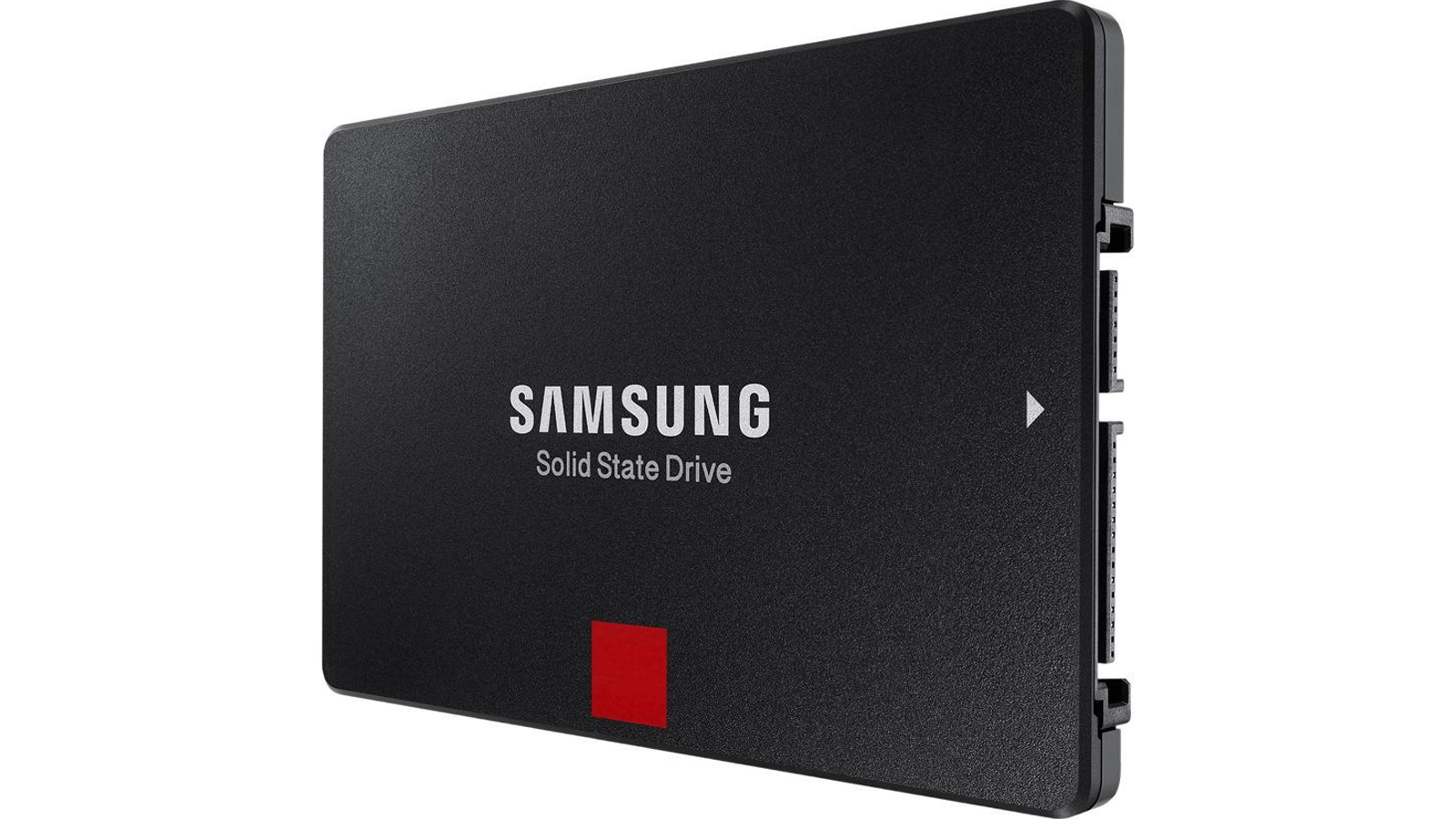
Specifications
Reasons to buy
Reasons to avoid
When it comes to a SATA III SSD, the best you're going to find in terms of raw performance is the Samsung 860 Pro. With sequential read and write speeds at the very limit of what SATA III can handle, you can definitely expect this SSD to handle whatever data access task you throw at it as fast as possible.
Where it really shines, however, is its random access speeds, and capacity. Other SATA III SSDs can read and write sequentially at the same speeds as the 860 Pro, but the 860 Pro edges out just about everyone else when it comes to random read and write speeds, which make up the majority of data access operations you're likely going to perform.
And while the 860 Pro has among the lowest MTBF ratings of the SSDs on this list, the 860 Pro's TBW ratings are phenomenal, with its 4TB SSD scoring the highest of all with 4,800. Add a 5-year warranty on top of all that and you have a SATA III SSD that will last you at least long enough until you finally break down and make the jump to an M.2 SSD.
Expect to pay for that durability, however. The 860 Pro costs nearly twice the dollars-per-GB as you would for the competition, with the maximum capacity 4TB SSD costing almost $1000/£800/AU$1500, about $460/£375/AU$675 more than a comparable WD Blue 3D NAND SSD.
- Read our full Samsung 860 Pro SSD review here
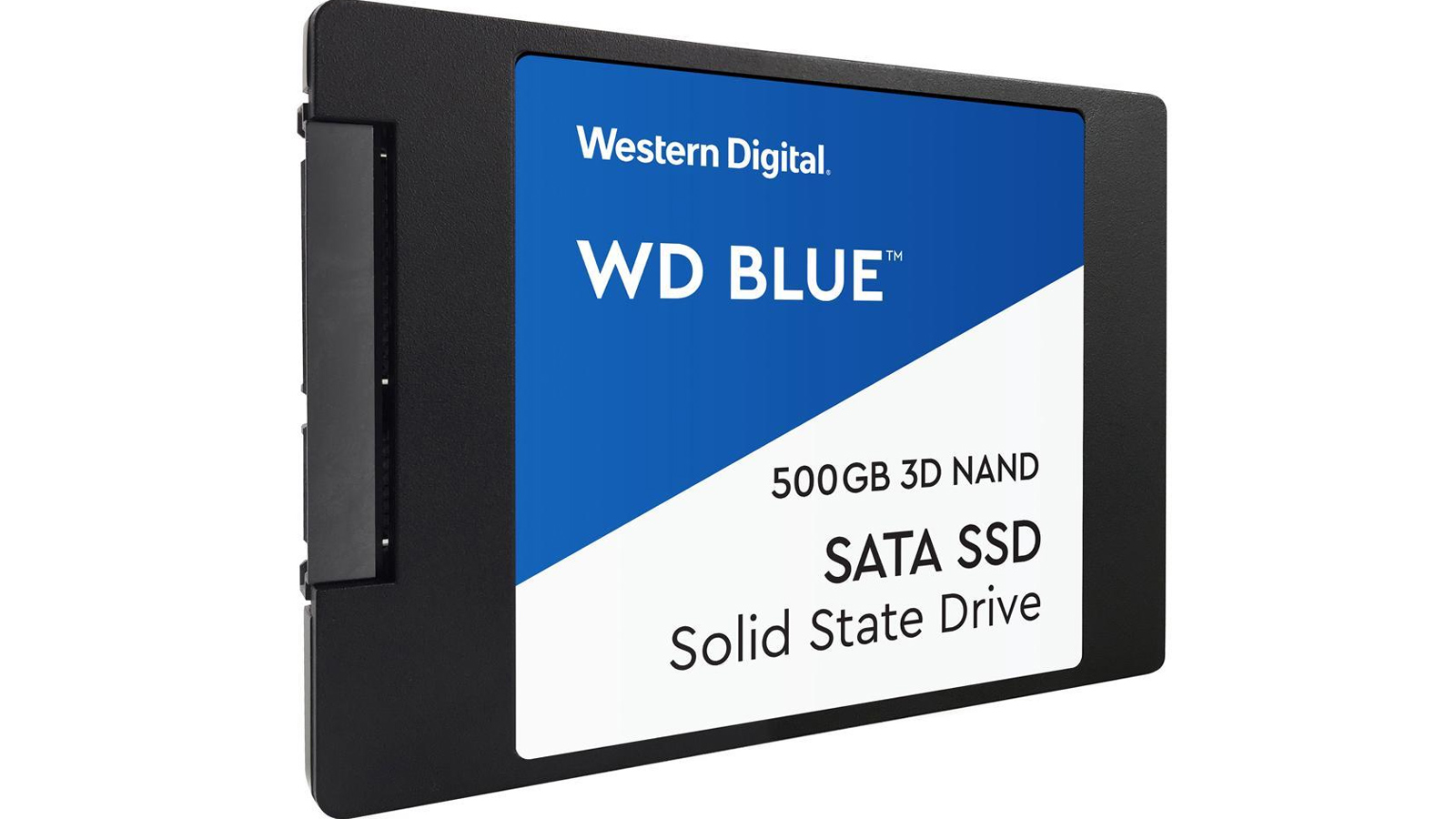
6. WD Blue 3D NAND SATA III
Specifications
Reasons to buy
Reasons to avoid
One of the major advantages of a SATA III SSD over the M.2 is its potential capacity. While most M.2s top out at 2TB, the WD Blue 3D NAND SSD maxes out at 4TB, matching the Samsung 860 Pro as the highest capacity SSD on the list.
Where it does better than the rest is its capacity-to-price ratio, especially when compared to a comparably-sized 860 Pro. In terms of cost-per-TB, the WD Blue 3D NAND comes in about $90/£72/AU$132 less than the Samsung 860 Pro.
If you have a massive game library that can't all fit on an M.2, or if an M.2 isn't an option for your motherboard, then the WD Blue 3D NAND might be the best gaming SSD if you really need a large capacity drive but can't afford a higher capacity Samsung 860 Pro.
However, the WD Blue 3D NAND does have a major drawback. While its sequential read and write speeds are comparable to Samsung's 860 Pro, the WD Blue falls behind the random read and write speeds by a noticeable margin.
And while it has a higher MTBF than the 860 Pro, its TBW rating is surprisingly low by comparison. The 256GB model only scores 100, the 2TB scores a mediocre 500, but the 4TB scores a pathetic 600, about nine times less than the 860 Pro's score for a 4TB SSD, and only 120 times the SSD's total capacity.
So while it does come with a 5-year warranty, depending on your usage, the WD Blue might be the only SSD on this list where you actually reach the terabyte written limit on it before the SSD reaches the end of its useful life.
Find the best deals on Western Digital products with our Western Digital discount codes.
Sign up for breaking news, reviews, opinion, top tech deals, and more.

John (He/Him) is the Components Editor here at TechRadar and he is also a programmer, gamer, activist, and Brooklyn College alum currently living in Brooklyn, NY.
Named by the CTA as a CES 2020 Media Trailblazer for his science and technology reporting, John specializes in all areas of computer science, including industry news, hardware reviews, PC gaming, as well as general science writing and the social impact of the tech industry.
You can find him online on Bluesky @johnloeffler.bsky.social